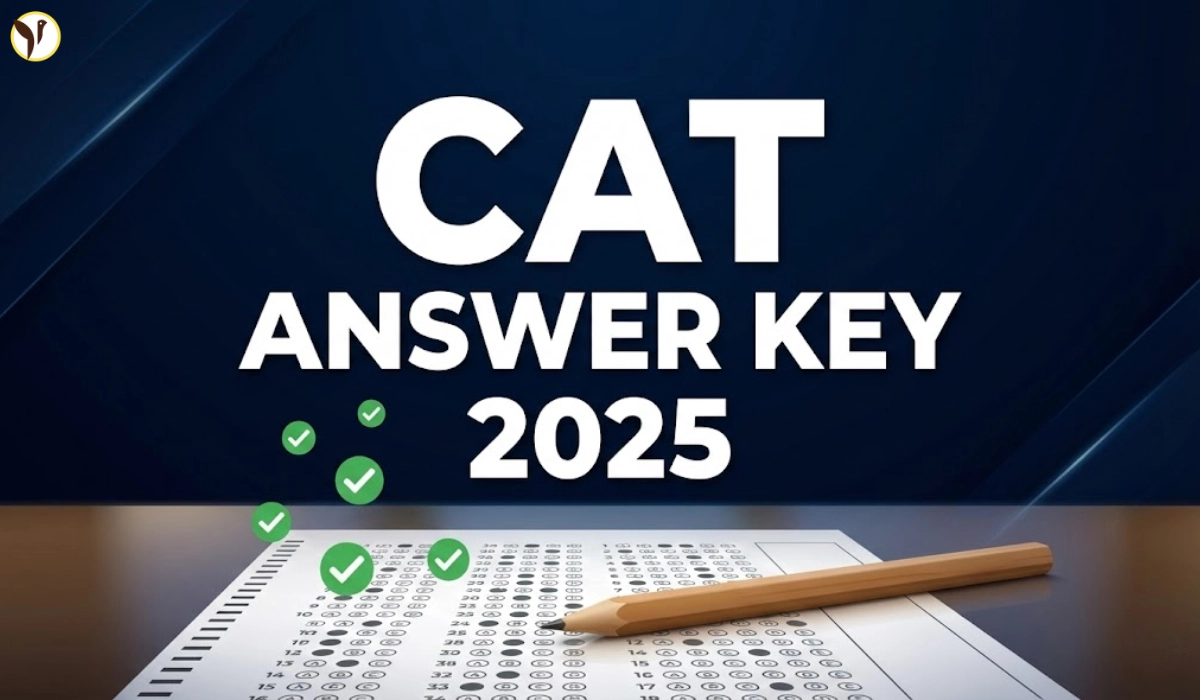As central government employees prepare for the increase in Dearness Allowance (DA) in 2025 there seems to be conversation and buzz regarding this proposed financial benefit or incentive. The DA is now more than ever, very meaningful to public sector employees as it assists them with addressing rising inflation and gives them some comfort to rely on. Now with a proposed increase range from either 3%, 4%, or 5% or more, the conversation is heating up.
For many employees it will only benefit you to begin examining the details of how these increases work and the factors that drive it with the viewpoint to help you become better planners. While some of you may have to wait for a specific change, or if you're just curious on what the future holds, being more specific will ultimately allow you to predict your earnings and economic situation. In this article, we will cover everything you need to know regarding central government employees' DA increase in 2025.
What is DA and why is it important for central government employees?
Dearness Allowance (DA) is an important supplement to the pay package of central government employees and protects employees against the effects of inflation. Employees will find some comfort in DA as they will realize it is somewhat eroding their purchasing power due to inflation.
For government employees, DA increases the monthly income purchasing power and gives them some comfort as they "weather the storms" associated with fluctuating prices. DA is very important for government employees as these types of price swings can presently be seen on things they buy, including groceries, utilities, gas, clothing, and others.
Lastly, DA is tied to pension and other benefits which in some cases, relate to the salary from which the employee achieves their pension. Therefore, this is important to understand and influences all aspects of public sector employment. DA is an important consideration for an employee to consider when planning their finances and how best to invest for their future while absorbing external changes in policy and markets.
DA Hike July 2025: What’s the Likely Increase — 3%, 4%, or More?
There is noticeable excitement among central government employees about the DA hike set for July 2025. Some have noted that the increase may be 3%, others predict it may go up to 4%, and a few are considering it could go beyond that.
AICPI-IW for the month of May 2025 increased to 144.
— 8th pay commission (@8thpaycommision) June 30, 2025
0.5 point rise from April (143.5)
Group-wise jump:
▪️ Food & Beverages
▪️ Fuel & Light
▪️ Pan, Supari etc
If June 2025 AICPI stays 143.1 or above,
👉 Next DA hike (from July 2025) will be confirmed at 3%!#dearnessallowance pic.twitter.com/V5eERBCneC
This adjustment is often stated to be influenced by inflation rates and the consumer price index, so these figures will be determinant going forward. Higher inflation could actually exceed expectations for the DA increase.
Analysts often look at historical data when making predictions. Recent hikes have shown fluctuations based on economic conditions and government policies.
It's a good idea for employees to keep track of official updates and expert opinion pieces until July 2025. Observing these updates will help them make certain preparations to their finances for the coming years.
Factors affecting the DA hike in 2025
There are a number of factors that will affect the DA increase for central government workers in 2025.
Inflation is one of the most important ones. With the increasing rate of inflation, there is usually a need to increase DA, particularly during periods of greater inflation.
Another important factor is the state of the economy. A better-performing economy usually correlates with increased revenue collection by the government, which makes it possible to revise DA upwards.
What is happening abroad is also important. Problems in overseas markets can have implications for domestic spending policies, budgets, and thus DA decisions.
The recommended decisions of Pay Commissions affect the dearness allowance calculation as well. Any modifications these bodies do tend to influence the amount available to employees.
Political factors are equally important; elections can determine the extent of support through hikes like these.
Current DA rates for central government employees
For central government employees, the current rate of Dearness Allowance (DA) stands at 42% as of 2023. This increase is meant to offset inflation and ensure employees maintain a decent standard of living.
The DA is reviewed bi-annually. Adjustments are made based on the Consumer Price Index (CPI) which measures the cost of living. During periods of inflation, this allowance is essential for sustaining purchasing power.
Recent data suggests that increases in DA have followed the economic trends. Employees look forward to these announcements in January and July, as they have a significant impact on take-home pay.
For a lot of employees, this allowance is not simply an additional benefit; instead, it greatly helps in budgeting and planning for the month’s expenditures. Employees understand how the current rates affect planning for prospective increases and changes in policies concerning the DA’s recalibration.
How DA Is Calculated Under the 7th Pay Commission
The calculation of Dearness Allowance (DA) under the 7th Pay Commission is heavily relies on the consumer price index. This index reflects the inflationary trends affecting day-to-day expenditures.
To calculate DA, something specific looks at how prices change over time. The base year for this calculation is 2001, and current inflation determines how much the figure needs to be modified.
Central government employees see their DA recalibrated twice a year—on January 1st and July 1st. These adjustments are meant to align with the cost of living, which ensures salaries targets the economy’s ups and downs.
Also, this allowance is paid in proportion to the employee's basic salary. Such structured calculations help maintain the purchasing power for government employees and helps with financial stability during turbulent periods.
Comprehending how these values work can enable employees to plan how to position anticipate earning for the foreseeable future.
Predictions for the possible DA hike in 2025
With the new 2025 approaching, insights on the Dearness Allowance (DA) for central government employees begin to rise. Most analysts and financial blueprints suggest that there may be a rise from anywhere between 3% to 6%. These numbers will heavily rely on the inflation rate, the state of the economy, and consumer price index trends.
If the government places more importance on the employee’s well-being, then predictions may be more unfavorably fueled due to a high inflation rate. Looking at past data, we can say that the DA is usually adjusted and ‘given’ along when the cost of living goes up.
A strong performance in key economic indicators might make people rethink how much of an increase is implemented. Since any decision can have a big effect on monthly budgets, employees keep a close eye on what’s happening.
In addition, talks about setting up the 8th Pay Commission might also re-evaluate the policy on DA hikes. It will be curious to see how the new info and speculations affect the government employees in 2025.
8th Pay Commission Buzz! 🚨
— OneVision Media (@onevision_media) July 14, 2025
Here’s what Central Govt employees might earn under the new pay revision
From support staff to Group A officers — expected salary hikes range from ₹33K to over ₹1 Lakh! 📈 pic.twitter.com/GQUW4aghIj
Effect of DA hike on central government employees
The DA hike has a direct impact on the financial health of central government employees. A considerable hike does increase their purchasing ability, enabling them to spend on the necessities of life more freely.
In view of the rising inflation, an increase in Dearness Allowance enables employees to afford the basics. This is very important for the standard of living.
Also, a bigger DA allowance usually means better saving and investing. Employees could be comfortable that their financial future is secure.
Alongside financial impacts, such hikes improve staff morale. It shows the government acknowledges their efforts and the challenges that have been faced for a long time.
A DA increase strengthens loyalty and improves productivity. It instills in the employees a feeling of value and appreciation for the efforts made by them.
How to prepare for central government employees DA hike in 2025
Preparing for a possible DA hike in 2025 calls for strategic planning, starting with analyzing your current budget. Keeping track of your spending will be especially useful when the time comes to make adjustments.
If a DA hike does get implemented, consider saving a portion of this newfound income. This may allow you to build up an emergency fund that provides added financial security.
Using this time to enhance skills that could help you get a promotion or change your role is always wise.
Take a look at existing debts and strategize ways to pay them down quicker, especially if your cash flow increases due to reduced liabilities.
Make sure to track government news about DA changes. Timely information provides better opportunities to plan and save money.
Potential effects of DA hikes on central government workers
For central government workers, a potential DA hike comes with a lot of weight. This can assist in managing inflation alongside improving overall living standards.
Employees strongly feel the impact on their budget and finances. Coupled with high inflation, an increase in DA makes a positive difference in the budget.
Also, having a greater DA might improve job satisfaction and morale among employees. Feeling appreciated monetarily boosts loyalty for the workforce.
Furthermore, greater earnings can lead to better dietary choices and a greater access to quality healthcare service. This shift also has a negative impact on individual’s families.
With each announcement, expectations grow and employees are excited for how much they will get. The anticipation increases excitement, but also anxiousness on what the future holds regarding finances.
Why Is There a Delay on DA Announcement—What Happens From July Sept/Oct
The delay in DA announcement brings central government employees under a lot of queries. This includes the time from July to September, which is usually very busy with calculations from all departments.
Economics government officials check the inflation rates, the consumer price indices and the new economic trends before coming up with a new set of DA rates. This process is necessary to ensure that the increase is justified by the economic environment.
Also, other inputs play an important role. During this time, unions that represent government employees push for reasonable increases which can delay the overall process.
Another reason for delays would be administrative red tape. Before any announcements are made publicly, they have to follow legislative steps.
Also, political factors might influence timing, as the government considers the possible ramifications on future elections or budget plans. With these factors together, it becomes very difficult to guarantee timely updates in what is already a very complicated environment.
Estimated Timeline & Process For DA Revision July 2025
It looks like the estimated timeline for the July 2025 DA revision starts with information gathering. That typically begins in early April when officials start collecting inflation figures as well as the cost of living index.
By May, key discussion among important participants start. Senior government officials analyze whether there will be any huge increases in the coming months. Employees eagerly anticipate good news during this time.
In June, some central government employees may have reasons to be excited or worried about increases based on some insights that can generate excitement or concern among central government employees about potential raises.
Typically, the official confirmation comes in the middle of July. Here the Ministry of Finance has an important role to play because he has to issue detailed notices whereby new percentages of DA are specified.
Afterwards, there is some time lag in the increased amount being paid out. Through various adjustments, all eligible employees will have their pay adjusted by August or September 2025.
For the employees impacted by these changes, staying up to date during the entire process is essential.
DA & 8th Pay Commission: What Changes With Jan 2026 Rollout
Central government employees are set to gain a lot starting January 2026, with the new pay issued in the 8th pay commission. Also, the method used in calculating Dearness Allowance (DA) is likely to be more sophisticated to take inflation and cost of living into consideration.
Employees can look forward to the addition of new formulas that capture economic realities in a better way. The introduction of this commission emphasizes trust and balance in the pay system.
There might also be an increase in the percentage of Dearness Allowance which provides much relief to overspending. Central government employees should be preparing for significant improvements under the revised policy.
With this change coming, employees must be making informed and educated decisions with their finances and understand the changes. Each person will have to evaluate how his earnings are likely to change as a result of this revision in policy.
User Impact: How Much Will You Actually Get? Example Calculations
Calculating economically is important with the increase in DA for central government employees. Let’s analyze some figures to show you how much additional earnings is possible with the increase in DA.
Let’s assume a basic pay of ₹50,000:
-
At 55% DA, monthly DA = ₹27,500
-
With 4% hike to 59%, DA = ₹29,500
→ Net gain: ₹2,000/month + arrears for July–Sept (~₹6,000)
Higher pay bands will see proportionally higher benefits—both immediately and via consolidated pension/allowances.
It’s astonishing how even the tiniest percentage changes make a difference to the budget, as well as plans for the future.
DA for Pensioners: When and How They Benefit from the Hike
Retired central government staff will also benefit from the DA increase. Their monthly pension entitlements are revised with every increase in dearness allowance, which allows them to continue receiving adjustments.
This implies that any dearness allowance increase automatically brings enhanced benefits for retired government employees. The adjustment takes place roughly a few months after the announcement is made.
Pensioners are given automatic benefits of these increases, as adjustments are made to the basic pension figure. They get adjusted at the same percentage as active employees.
Knowing the details of when and how these changes occur can help retirees
better forecast their finances. Keeping track of important announcements makes
sure that they stay updated on the changes that could impact their income.
This financial cushion during inflationary periods where the cost of living
four increases is essential and comes in handy for many, both in terms of
comfort and support.
State vs Central DA Hikes: Comparing Differences & Timing
State and central DA hikes differ significantly with respect to timing and the
percentage increase. Central government employees receive Dearness Allowance
(DA) revisions every 6 months around January and July. These announcements are
made on a regular and predictable basis twice a year, allowing employees to
look forward to these milestones.
In comparison, state governments have their own schedules for making
announcements, resulting in greater divergence among the states. Some align
with the central government schedule others prefer to operate at slower or
faster paces using completely different intervals or bases implementation
changes on regionally defined economic conditions.
The extent of increments also differs. While central DA is almost always vertically uniform across departments, state level increases are subject to local fiscal circumstances and politicking. This variation often causes disparity in employee morale and cost-of-living adjustments between federal and state employees.
Next Steps for Employees—Checklist
Attend to all information pertaining to the DA hike. Reliable news outlets and government portals should be checked regularly.
Project your expenses assuming a certain increase in earnings for the month. Consider scenarios like a 3% or 4% increase and determine your budget around those figures.
Participate in discussions with other employees on social media or dedicated forums dealing with DA hikes. Connect to different viewpoints and stay informed.
Look for courses that deal with personal financial management and investment. Being knowledgeable will help you make informed decisions on long-term saving instruments and investment structures.
Be aware of timelines for all days that relate to the revisions. Set reminders for key deadlines so you’re ready for any notifications or steps needed from you.
Evaluate your own career pathways in the backdrop of the ambiguity. Look into this as an opportunity to acquire new skills that improve your chances for advanced positions in the organization.
History of DA hikes for central government employees
There have been notable instances in the timeline of the Dearness Allowance (DA) hikes for central government employees. DA was previously introduced, purely as a measure to counteract inflation. It, however, became one of the primary factors of an employee’s salary.
There was a significant spike around the late 1980s and early 1990s. During this time, the cost-of-living index saw a rise, leading to these changes being made. Public employees were indeed supported during this period with the adjustment made to prices.
DA hikes were previously not consistent with any patterns but now seem to be more systematic and are usually bi-annually, In January and July. Each specific increase comes with its own set of determinants including inflation rates, the Consumer Price Index (CPI), or even suggestions from pay commissions.
The estimates provided by the 7th Pay Commission allowed for more systematic revisions. With the more efficient calculations alongside the greater transparency, the updating could now be done without much worry. For a considerable amount of families that rely on these salaries, the given revisions have proved to be helpful.
Conclusion
Employees under the federal government have been eagerly waiting for news on the allowance hike for next year. The curiosity presents itself with factors like the potential increase percentage as well as the expected financial relief it can provide.
Knowing what DA is and its importance allows employees to make financial decisions. It is clear that, for a variety of reasons, this figure could be an increase of anywhere from 3% up to significantly more.
As we near July 2025, looking at the current rates and analyzing historical data becomes important for everyone involved. The calculations made under the 7th Pay Commission also provide some insight into potential future hike structures as well.
For both active employees and pensioners, an increase could grant better financial security during uncertain times. Also, understanding the state versus center DA differences helps in managing expectations.
Having a proactive approach as checklists and planning your finances for any changes can help eliminate stress when the long-awaited announcements come around.
Combining all these aspects allows you to stay agile with your personal finance plans while adapting to the looming positive shifts anticipated after the Dearness Allowance hikes.









